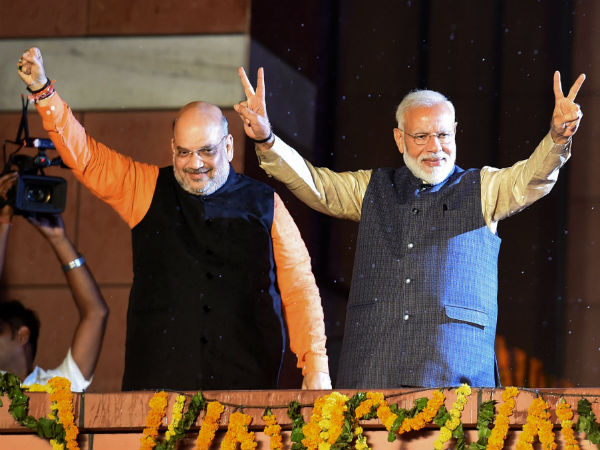For any political mobilisation, leadership plays a major role. The mobilisation essentially happens in two parts, first part is consensus mobilisation and second part is action mobilisation. Consensus mobilisation requires political party and political leader to influence the identity and ideology of people. Influencing identity and ideology is a comparatively easy process to understand. Prime Minister Mr. Narendra Modi and BJP influenced people’s identity and ideology by using the Hindutva agenda.
They also connected with common people with the slogan, “Sab Ka Sath Sab Ka Vikas.” Indian being majority Hindu nation this process of developing people’s consensus to Hindu ideology may have been slightly easy. The game of politics is tough one and it needs consistent efforts. However, we have not seen any other party’s consensus -building agenda equivalent of Hindutva. Of course, some efforts were made to build the Mahagatbandhan, which failed to make any impact. The efforts of Mahagatbandhan, Dalit-Muslim union, Vanchit Bahujan, Aam Aadami, Pasmanda etc. But they appeared fragmented and none achieved the level of popularity that Hindutva acquired.
Leader also plays an important role in arousing emotions of injustice, anger and hope. Every human being has a need to change his circumstances. Mr. Modi used the trump card of dynasty quite well. He made sure people felt the injustice and neglect by the Congress. He created the narrative of them (dynasty) vs us (common person).
To further strengthen his position, he flaunted his identity as Chaiwala. The common person could relate to the image of Chaiwala. He emphasised on damages and corruption done by Congress. Mr. Modi anyway has a charismatic personality and he further enhanced his personality by his power dressing. He called himself fakir (a religious ascetic who lives solely on alms) but made sure he looked good on screen. His sense of managing his media presence is indeed very evolved.
Mr. Modi made himself the indispensable leader. He benefited from the efforts put by RSS, over the years in building solidarity amongst the Hindus. He claimed the resources built by RSS over 70 years. People didn’t see any option, as Rahul Gandhi (or others) did not match the charisma of Mr. Modi.
In fact, Rahul Gandhi did have a greater advantage through his pedigree. Unfortunately, he couldn’t use that to his favour. BJP created a parallel campaign to prove how useless Rahul Gandhi was. The negative positioning campaign worked successfully well. Congress had an opportunity to rebuild the image of Rahul Gandhi. However, enough efforts were not made.
The agenda of injustice was the game changer. Modi created an environment of hope to create a better future for all. However, the promises made by Modi did not get fulfilled. He took a lot of erratic and haphazard decisions. May that be demonetisation or GST.
However, he made sure he used right frames (narratives) to convince people. Despite facing heavy criticism from economists, he managed to convince people why his decision was right? He used the frame of ending corruption and terrorism. He sounded convincing to common people.
For any effective mobilisation, technology plays an important role. Mr. Modi did not shy away from spending millions of rupees in running his social media campaign. In fact, 2019 election is the most expensive election in the history of India. He systematically used media to influence people’s minds and opinions. He also created an environment of fear.
He created that fear environment for multiple groups and at multiple levels. He created the fear of Hindutva is in danger. He created a fear of India being in danger of being attacked by Pakistan. He created the fear that if people don’t support him then Congress may do greater harm to the country. In this process many left-wing groups felt the fear and threat. It’s not up to me as an analyst to pass judgements. I am just stating the facts.
As I discussed earlier developing consensus of like-minded people is comparatively easy than influencing people to take actions. That action of joining the rallies, working for the party, being influencers, being part of social media campaigner etc. and finally voting for BJP. From subscribing to ideology to influencing people to take action of casting a vote is a long-driven process.
It requires a lot of efforts and well-designed strategies. It requires special frames, we have seen the frame of Hindutva, the frame of corruption, Congress free India, chaiwala and chowkidar were dominant. They did work well. To influence people, political party must have a great understanding of the target audience / network.
Modi divided his network into 3 primary categories, population of poor people (who voted maximum), middle income group and youth. In 2014 he appealed to the majority poor population. Where he talked about their basic needs like toilets, cooking gas, bank account etc. The hope of good future mobilised that demographic to bring Modi to power.
He has not been successful in fulfilling the promises he made. In politics emotions play an integral role. Specifically, in India where basic value system revolves around emotions. Modi made emotional appeal to his voters, where he emphasised his inability to clear the 70-year-old mess created by Congress. When one compares damages of 70 years and progress of 5 years.
It sounds logical. Modi has a great talent of appealing to people emotionally. May that be the appeal to youth to vote for his victory in Pulwama. He created a pseudo atmosphere of victory over Pakistan. The emotions of win over Pakistan has worked in his favour. That indeed was the master stroke. Again, that shows how he knew to catch the pulse of people.
He has the capacity to form a connect with people. He is a shrewd politician who knows how to concentrate power in one hand. He represented the whole party as Modi. In country like ours, where we are conscious of class and caste, he used both these to his favour. He never engaged himself in dialogue. He never believed in democratic decisions. As though he knew Modi is BJP and BJP is Modi. This victory solely belongs to Modi.
In summary, leadership, frames (stories you tell people), emotions, understanding of demographics (networks) and effective use of technology can together create a winning formula. Hope Congress and other parties ponder over this success formula. Unless the fragmented opposition manages to build a consensus around a strong concept countering Hindutva, BJP may get a chance to rule for many years. After all, a strong Opposition is very important for democracy to survice. Hope, Mr. Modi lives up to his promises, follows constitution and practices secularism to make minorities feel safe.

Dr Prerna Tambay
Dr. Prerna Tambay is an academic, researcher, and entrepreneur who runs a consulting company specialising in the area of Human Resource Management. Before starting her entrepreneurial venture, she has taught Human Resource Management related subjects at universities in Mumbai, London, Oxford and Birmingham. She is passionate about feminist issues and women empowerment.

![Powerful Pride documentary Legendary Children [All Of Them Queer] streaming very soon](https://globalindianstories.org/wp-content/uploads/2025/06/Legendary-streaming-release-featured-238x178.jpg)



![Powerful Pride documentary Legendary Children [All Of Them Queer] streaming very soon](https://globalindianstories.org/wp-content/uploads/2025/06/Legendary-streaming-release-featured-100x75.jpg)

